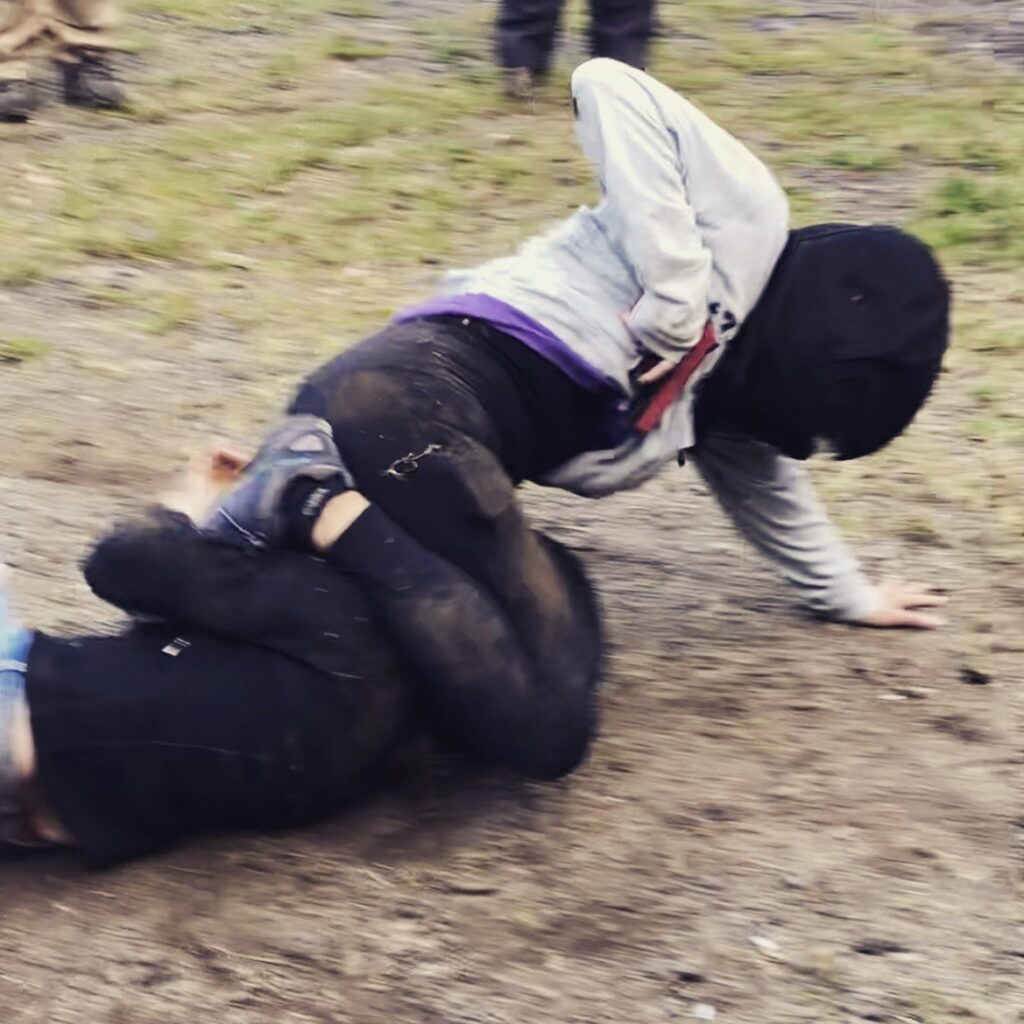
This past weekend, I trained with Craig Douglas / Shivworks once again. I had professional reasons for going (you’ll see the results on InRange TV), but the heart of training like this always has a heavy personal component too. While it’s especially true of Extreme Close Quarters Concepts, ECQC, where I was, it’s also true of challenging self-defense classes in general. See, learning the skills of self-defense are only a part of the equation. Skills-only classes aren’t a bad thing, but they don’t stand alone when it comes to being safe. You must be able to decide when to appropriately deploy them, and then be able to use them under pressure, when and where it matters.
The decision to defend yourself has multiple layers. There’s deciding in the moment on whether it’s “go” time. Is this person really trying to hurt you? Can they? How badly? While some situations are very clear-cut, others are far more complicated. There’s a difference between an aggressive panhandler and a panhandler who is going to aggressively attack you for refusing, for instance. It’s not always easy to decide if that loud, incoherent, large stranger is emotionally disturbed and harmless or drugged out and looking for any excuse to hurt someone either. And sometimes, that dude over there might not want to intentionally hurt you, but he’s going to anyway if he keeps doing what he’s doing. What do you do? What skills and tools do you use? Building up a set of options from being able to walk away or deescalate to being able to shoot someone is a good and important work, but being able to pick which end of the spectrum you need to be at, and being able to scale up and down, is really hard. You need to learn and practice that as much as the fighting and shooting and other technical aspects.
But before then, you have to decide that you are willing to defend yourself, that you believe yourself worthy of the fight, that you value your health and life above that of someone who may be trying to harm you. I know what a lot of us will say publicly and even among friends, but I also know that often, our secret selves will say something else. That goes both ways: some of us will proclaim that we would never let anybody hurt us, then go home to someone who grinds away at our inner and outer selves every day; some of us will talk about how all life is sacred and everybody deserves chances, but whisper quietly, “everybody, but the bastard who raped me.” Whichever it is, we must be honest with ourselves so that when the chips are down, we don’t find ourselves ready to fight and unable, or able to fight but unready. One of the ways we find out is to subject ourselves to realistic and unpredictable simulations and see what happens. If we discover an incongruence between what we thought we we willing to do and what we are willing to do, we won’t have paid the ultimate price and will have the opportunity to do something to change our mental and emotional responses to various types of danger.
Even if we decide we want to fight, and are certain that we will fight when it matters, we still need to be able to do so effectively. Having all of the heart in the world to struggle for your life will not always win out. It’s true that some bad guys will give up at the least sign of resistance, and that being able to fight but unwilling can lead you to self-sabotage in some minor but critical way leading to injury or loss of life. But it’s also true that there are bad guys who won’t be fazed by all of the screaming and squirming you can muster, whether because they don’t care or because their mental or physical state don’t allow them to even notice. For those, we need to be able to force our way to safety either by finding a way to leave or by making them stop. When they’re like that, and the attack is already on, it’s rarely so simple as getting up or running to safety. Often, we must have physical fighting skills, with or without tools like pepper spray or guns.
It’s one thing to be able to use them in a supportive training environment, or in solo practice. All of us can get to the point where we’re really, really good at doing the moves and making the hits when we’re in a sterile and safe environment. It’s necessary that we do, too, and this is not to say that practicing in those environments is bad. However, motor skills and cognition degrade when we are under stress, under attack, when the person we are acting against gets a vote on whether or not what we do works. Because of that, challenge in training is also necessary. Working on these skills in opposed environments can be done with physical and emotional safety, where we can find out what we need to work on to ensure that our skills can prevail even if someone else wants to win against us. The trick here is to balance the level of challenge against our level of current ability so that we are gaining a true picture of our skills while not becoming so discouraged that we give up on our development.
Classes like ECQC aren’t hard just because the skills we learn can be difficult to master. They’re hard because we examine – intimately and experientially – when to use them and whether we can use them well enough to turn the tide of a violent encounter to our favor. Sometimes, the answers from class are hard to swallow but that’s exactly why they’re worth the investment.




